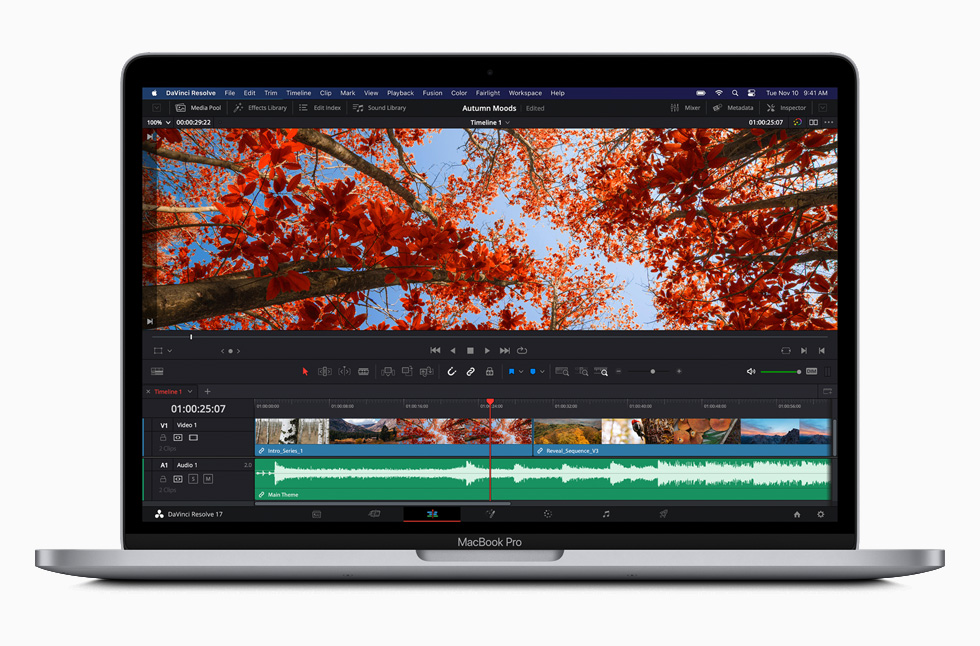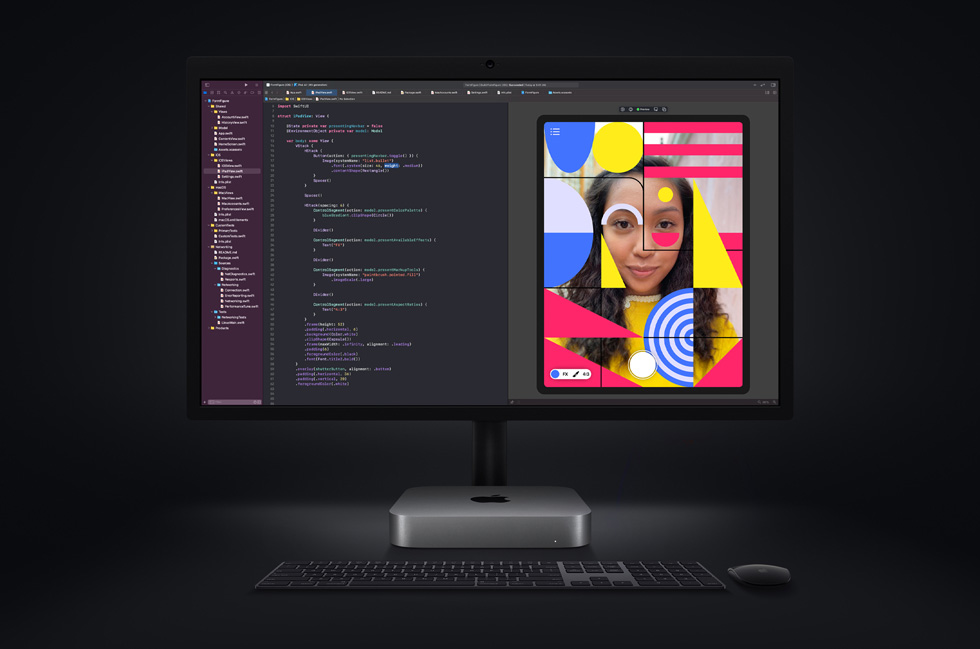Apple held today a short digital event to unveil its first Macs powered by Apple Silicon. The new devices include a MacBook Air, a 13-inch MacBook Pro, and a Mac mini all powered by Apple’s new M1 chip, its first SoC for Macs.
“With its industry-leading performance per watt, together with macOS Big Sur, M1 delivers up to 3.5x faster CPU, up to 6x faster GPU, up to 15x faster machine learning (ML) capabilities, and battery life up to 2x longer than before,” Apple said in a press release. Apple’s M1 chip comes with an eight-core CPU and an eight-core GPU, with a unified memory architecture accessible to the entire SoC.
Because M1 uses the same ARM-based architecture as Apple’s Ax series of chips for iPhones and iPads, these first Macs with Apple Silicon will also be able to run the same iOS apps, in addition to existing macOS apps. The ARM version of macOS Big Sur will be able to emulate existing Mac apps via Apple’s Rosetta 2 technology, but developers like Adobe have already started to recompile their apps for the ARM64 architecture.
Apple’s new MacBook Air powered by the MA chip will use a fanless design, and it will be 3x faster than the best-selling Windows laptop in its class according to Apple. The company also promises up to 15 hours of battery life when browsing the web, and up to 18 hours of video playback. The base model with 256GB of storage starts at $999 ($899) for education, with the $512GB model costing $250 more.
Also launching today is a new 13-inch MacBook Pro using the same M1 chip, though this time paired with an active cooling system. Apple still claims that it’s the world’s fastest compact pro notebook, with up to 17 hours of wireless web browsing and 20 hours of video playback. This is the longest battery life ever seen on a Mac, and Apple still claims that its new MacBook Pro is up to 3x faster than the best-selling laptop In its class.
This new 13-inch MacBook Pro starts at $1,299 ($1,199 for education) for the model with 256GB of storage, and you’ll need to pay $1,499 to get twice the storage. The overall design remains the same, Touch Bar included, and Apple will keep selling Intel-based MacBook Pros in 13.3-inch and 16-inch variants.
Lastly, Apple revealed today a new M1-powered Mac mini starting at just $699, which is $100 less than the previous-generation quad-core model. “When compared to the best-selling Windows desktop in its price range, the Mac mini is just one-tenth the size, yet delivers up to 5x faster performance,” Apple said today.
These new Macs powered by this new M1 chip sure look promising, and the company plans to transition its whole Mac family to its own Apple Silicon over the next two years. Not relying on Intel anymore should allow Apple to iterate faster on its different Mac models, and the shift will also benefit developers which interested in porting their iOS apps to macOS.
As Microsoft and some of its OEM partners have been experimenting with Windows 10 on ARM PCs in recent years, it will be interesting to see if Apple has better success transitioning its Mac ecosystem to the ARM architecture. Windows 10 on ARM had quite a rocky launch due to performance issues and the lack of support for 64-bits legacy apps, but Microsoft is now leading the way with its new Surface Pro X using a custom-designed Qualcomm SoC. Microsoft also said that x64 emulation will be available on Windows 10 on ARM PCs later this year, which should really help to make the platform more viable going forward.




